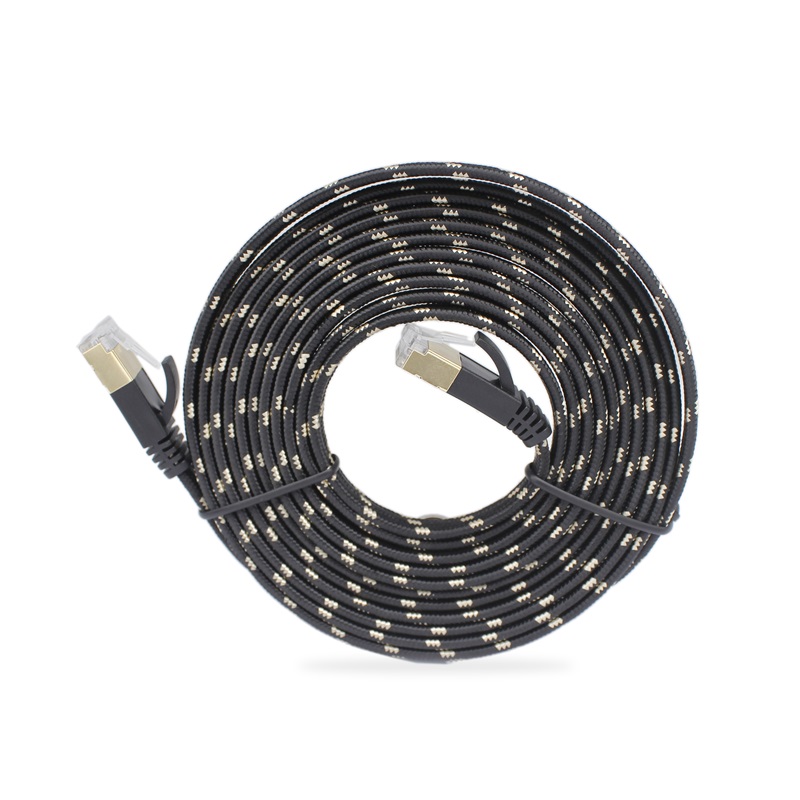Cat8 Ethernet cables have gained attention for their potential to deliver blazing-fast speeds and high-performance networking. However, achieving these speeds isn't solely dependent on the cable itself. Several factors come into play that can impact the actual speed of Cat8 Ethernet cables speed. This article explores these critical factors, shedding light on what influences the cable's ability to reach its maximum potential.

1. Cable Length and Signal Attenuation
One of the primary factors that impact the speed of cat8 ethernet cable 50ft is the length of the cable itself. As cable length increases, signal attenuation becomes more pronounced. Signal attenuation refers to the loss of signal strength as it travels down the length of the cable. With higher-frequency signals used by Cat8 cables, attenuation can have a significant impact on signal quality and, consequently, on data transmission speed.
In shorter cable runs, Cat8 cables can achieve their highest speeds more effectively. Longer cable lengths can lead to higher levels of attenuation, resulting in a reduced signal-to-noise ratio and potentially limiting the achievable data rates. Therefore, when deploying Cat8 cables, it's essential to consider the distance between network devices and opt for shorter cable lengths whenever possible.
2. Quality of Connectors and Termination
The quality of connectors and termination points also plays a crucial role in the actual speed of Cat8 Ethernet cables. Cat8 cables use connectors that are specifically designed to handle the higher frequencies and data rates associated with their capabilities. However, poorly made or low-quality connectors can introduce signal loss, reflections, and other distortions that degrade the overall signal integrity.
Proper termination of Cat8 cables is equally important. Any signal disruptions caused by inadequate termination can hinder the cable's ability to achieve its rated speeds. Ensuring proper connector quality and termination techniques is essential to realizing the full potential of Cat8 Ethernet cables.
3. Network Equipment and Hardware
Cat8 Ethernet cables might be capable of reaching impressive speeds, but the devices they connect to must also be equipped to handle those speeds. Network switches, routers, and network interface cards (NICs) need to support the data rates offered by Cat8 cables. If any component within the network chain is limited to lower speeds, the overall network throughput will be constrained, even if Cat8 cables are in use.
Network hardware that is not designed to handle the higher frequencies and data rates of Cat8 cables can act as bottlenecks, preventing the cable from delivering its promised speeds. It's crucial to ensure that the entire network infrastructure, including the hardware, is compatible with Cat8's capabilities.
4. Electromagnetic Interference (EMI)
Electromagnetic interference (EMI) can significantly impact the speed and performance of Cat8 Ethernet cables. Despite Cat8 cables' advanced shielding, external sources of EMI, such as electronic devices, power lines, and fluorescent lighting, can introduce noise into the cable's signal. This noise can lead to signal degradation and reduced data transmission speeds.
Proper cable routing, using quality shielding techniques, and minimizing the proximity of Cat8 cables to potential sources of EMI are essential steps to mitigate the impact of interference. Maintaining a clean and interference-free environment can help Cat8 cables perform optimally and deliver the expected speeds.
Cat8 Ethernet cables hold the promise of extraordinary speed and performance, but several factors influence their actual speed capabilities. The length of the cable, the quality of connectors and termination, the compatibility of network hardware, and the presence of electromagnetic interference all play critical roles in determining the cable's effectiveness in achieving its advertised speeds.
To harness the full potential of Cat8 Ethernet cables, it's essential to consider these factors during the planning, installation, and maintenance phases of network deployment. By addressing these variables and ensuring that the entire network ecosystem is optimized for Cat8's capabilities, users can unlock the high-speed advantages these cables offer, empowering their networks to meet the demands of today's data-intensive applications.


